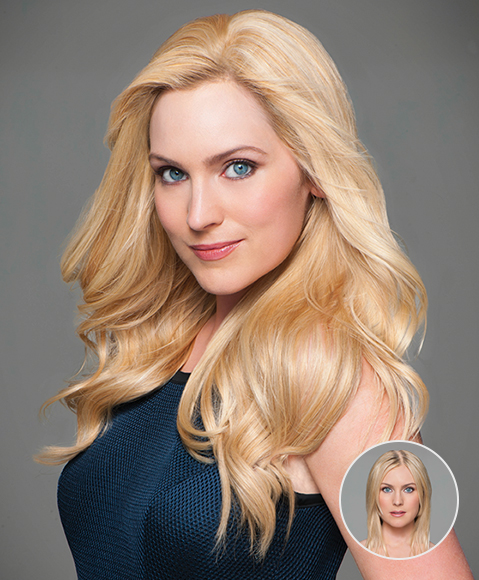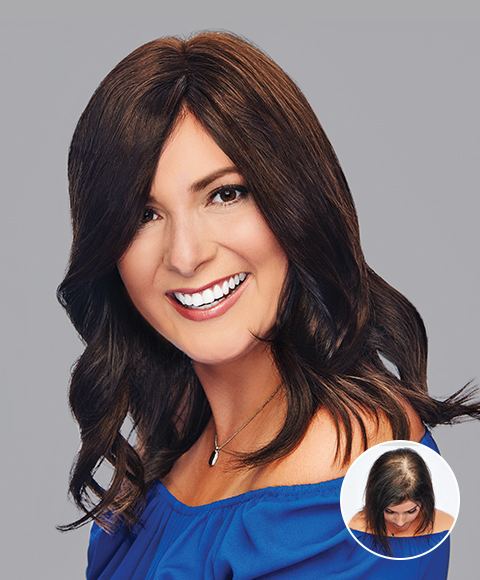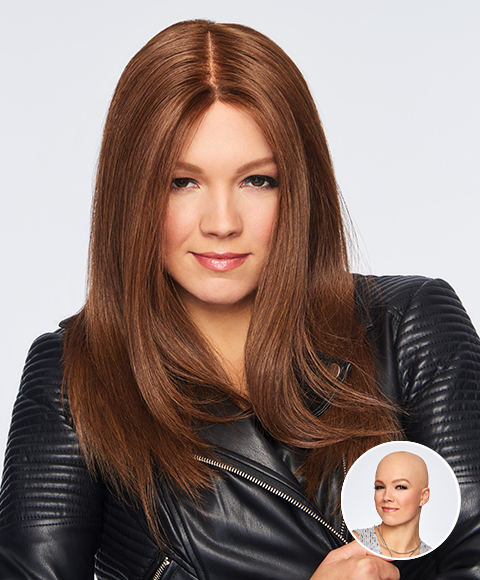Staten Island’s Leader in Women’s Hair Loss Solutions for Alopecia and Thinning Hair.

Hair replacement… with an attitude. It’s science and nature in complete harmony. Now you can forget the embarrassment and self-consciousness of thinning hair, female hair loss, and baldness. Thinning hair is not a problem anymore because of the all natural women’s hair replacement systems from Bond Studio are the completely natural, personally customized fashionable hair loss treatment women want, that is totally and completely undetectable.
If you are a woman who has genetic hair loss, hormonal hair loss problems or has lost hair through medical treatments, you no longer need to feel self-conscious about your looks.
You can have real, lush hair, that’s perfectly matched to your own. Hair that styles any way you want it and is uniquely yours.



Women’s Non-Surgical Hair Replacement
Women’s Non-Surgical Hair Replacement
Women’s Non-Surgical Hair Replacement
Women’s Non-Surgical Hair Replacement
Roughly 20% of women suffer from a certain type of hair loss called Alopecia.
Think about this: an average scalp loses approximately 100 hairs each day.
Hair grows at an average rate of one half inch per month, and it only grows for 2 to 6 years.



Women’s Non-Surgical Hair Replacement
Women’s Non-Surgical Hair Replacement
Women’s Non-Surgical Hair Replacement
Women’s Non-Surgical Hair Replacement
So what causes women to lose their hair?
The main culprit is a male hormone called dihydrotestosterone (DHT), which does come from testosterone, but collects on hair follicles sending them into their resting phase we mentioned earlier. This binding of the DHT onto the hair follicle causes any new hair produced by the follicles to be thinner through each cycle of growth. If a woman has high androgen levels, she may see the hair on her scalp thin while the facial hair becomes coarser.
It can be said that changes in sex hormones is the main reason for most of a woman’s hair loss, especially those experiencing birth control side effects, pregnancy or menopause.
The most common cause of hair loss in women is usually from a male hormone imbalance known as androgenic alopecia, not from estrogenic alopecia, which is caused by a fall in estrogen levels.
Estrogen actually helps hair grow much faster and stick around longer, which results in a thicker head of hair. This is why a woman may notice fuller hair during pregnancy when estrogen levels are very high, but then falls away after the birth of the child. Typically estrogen-deficiency alopecia begins around menopause, and, because oestrogen levels begin to decrease before periods stop, this form of female hair loss can be the first signal of impending menopause.
Although most women experience some amount of thinning after menopause, not all end up with significant alopecia. Hypothyroidism, or low thyroid function, can also contribute to hair thinning, even though it is responsible for weight problems.
So what causes women to lose their hair?
The main culprit is a male hormone called dihydrotestosterone (DHT), which does come from testosterone, but collects on hair follicles sending them into their resting phase we mentioned earlier. This binding of the DHT onto the hair follicle causes any new hair produced by the follicles to be thinner through each cycle of growth. If a woman has high androgen levels, she may see the hair on her scalp thin while the facial hair becomes coarser.
It can be said that changes in sex hormones is the main reason for most of a woman’s hair loss, especially those experiencing birth control side effects, pregnancy or menopause.
The most common cause of hair loss in women is usually from a male hormone imbalance known as androgenic alopecia, not from estrogenic alopecia, which is caused by a fall in estrogen levels.
Estrogen actually helps hair grow much faster and stick around longer, which results in a thicker head of hair. This is why a woman may notice fuller hair during pregnancy when estrogen levels are very high, but then falls away after the birth of the child. Typically estrogen-deficiency alopecia begins around menopause, and, because oestrogen levels begin to decrease before periods stop, this form of female hair loss can be the first signal of impending menopause.
Although most women experience some amount of thinning after menopause, not all end up with significant alopecia. Hypothyroidism, or low thyroid function, can also contribute to hair thinning, even though it is responsible for weight problems.






